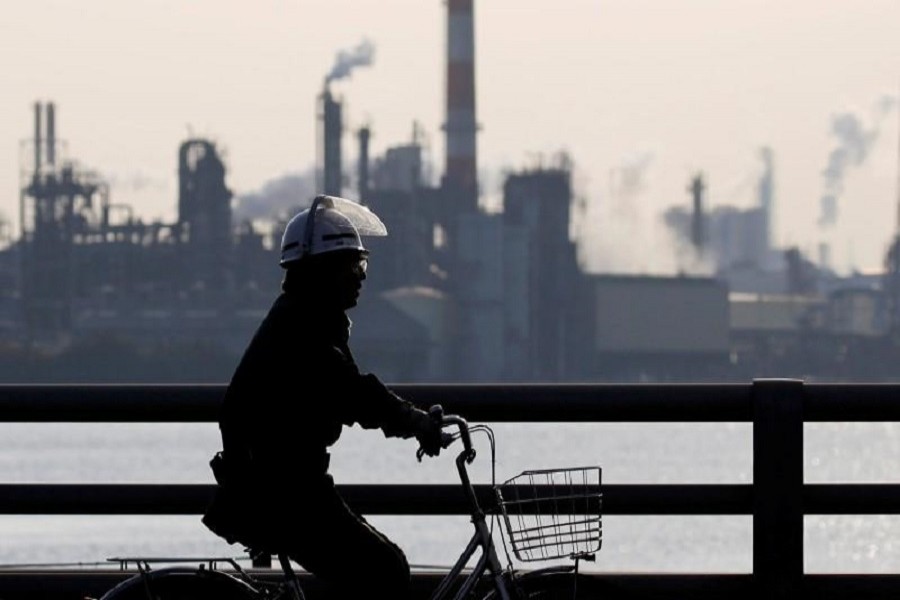Factories across the globe got off to a strong start this year, with manufacturing activity in most countries gaining momentum and hitting multi-year highs.
Business surveys from Europe and Asia showed solid activity and output, reinforcing expectations for another year of synchronized global expansion that has propelled many world stock markets to or close to record highs.
Last year, the euro zone economy was a surprise global star and any signs that zip, alongside rising price pressures, has carried into this year will be welcomed by the European Central Bank as it moves to unwind its super-loose monetary policy.
The 19-country bloc’s booming manufacturing industry raced into 2018, churning out goods at one of the fastest monthly paces in over 20 years in January.
“The euro zone economy clearly has a tailwind behind it. There is nothing on the immediate horizon which would make you think the economy is about to run out of steam,” said Peter Dixon, global financial economist at Commerzbank.
IHS Markit’s January final manufacturing Purchasing Managers’ Index for the euro zone was 59.6, matching an earlier preliminary reading but below December’s 60.6 - which was the highest since the survey began in June 1997.
Indicating February would also be a busy month, new orders growth was at a near record pace as was employment. Firms also built up a solid backlog of work and were their most optimistic in at least 5-1/2 years.
Among the four biggest economies, PMIs were close to record highs in Germany and Italy and among the best for 17 years and a decade in France and Spain respectively.
But the biggest outlier in Europe was Britain, where manufacturing lost more momentum than expected last month. Uncertainties over its path to leave the European Union next year curtailed business investment, following one of the steepest jumps in the cost of raw materials in decades.
“The UK economy looks set to grow at half the rate of the US in 2018 and a full percentage point slower than the euro zone,” said James Knightley, chief international economist at ING. “It should be doing much better given the global upturn in demand and the competitive sterling exchange rate.”
The UK factory PMI dropped to its lowest since June and the prospects for 2018 do not look bright.
Markets were little moved by the data. Focus will later turn to the United States, where a sister survey is expected to show solid manufacturing activity.
Tech trade
The strongest manufacturing readings in Asia came from tech exporters, which continue to ride a robust semiconductor cycle driven by upgrades in smartphones, industrial robots, cars, and more recently demand for computing machines used to mine cryptocurrencies like bitcoin.
In Japan, the Markit/Nikkei PMI rose to a four-year high.
Taiwan’s reading rose to its highest since April 2011, while South Korean factory activity bounced back into expansion territory as domestic and export orders picked up.
Even in China -- where authorities are cracking down on air pollution and excessive financial risks -- factory growth last month appeared generally resilient, though economists agree the crackdowns will start to weigh on activity eventually.
The private Caixin/Markit PMI was steady at 51.5, matching December’s reading and better than economists at expected, though official data on Wednesday suggested a slight softening as export orders faltered.
A clearer picture of China’s manufacturing activity and its actual demand may not emerge until spring when winter smog restrictions are lifted and construction revives.
“Overall, we expect Asian manufacturing conditions to remain healthy, supported by robust external demand and accommodative domestic monetary policy,” said Krystal Tan, Asia economist at Capital Economics.
Risk of protectionism
The outlook for Asia’s export-reliant economies, however, remains clouded by worries about US trade protectionism as the Trump administration starts translating last year’s tough talk into action.
Washington slapped steep import tariffs on washing machines and solar panels last week, drawing protests from Beijing and Seoul, and US officials suggest other measures are on the way.
While such steps could hurt growth, HSBC Private Banking’s head of investment strategy for Asia Cheuk Wan Fan said there was no reason to panic as Asian countries trade more with each other than in the past and are less reliant on the United States.
Individual companies were therefore more at risk than the wider economic picture.
“When we look at the risk arising from US protectionism and trade in-fighting, we adopt a bottom-up approach in identifying potential victims,” she said. “We will avoid these companies which heavily rely on US export markets.”


